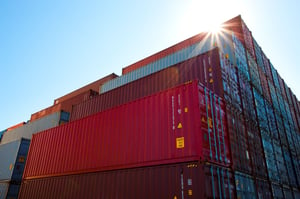The Carbon Border Adjustment Mechanism (CBAM) is the European Union’s landmark policy designed to put a carbon price on certain imported goods. This ensures that foreign producers face similar costs as EU-based manufacturers who participate in the EU Emissions Trading System (EU ETS). As businesses adapt to this evolving regulatory framework, understanding the sectors impacted by CBAM is crucial. CBAM aims to prevent carbon leakage, where companies relocate production to countries with looser emissions regulations. The mechanism will gradually phase in, affecting high-emissions sectors across a broad range of industries.
Read More: The EU Emissions Trading System (ETS) Explained
How Does CBAM Work?
CBAM commenced its transitional phase on October 1, 2023. During this initial phase, which extends until December 31, 2025, EU-based importers must submit quarterly reports detailing the embedded emissions of their imports, without incurring financial obligations. CBAM operates by requiring importers to:
- Report the embedded carbon emissions of their imported products.
- Purchase CBAM certificates, equivalent to the carbon price paid by EU manufacturers under the EU ETS (commencing 2026).
- Align with CBAM timeline requirements, with full implementation set for 2026 and the phase-out of free allowances by 2034.
Key Sectors Impacted by CBAM
The sectors impacted by CBAM encompass six carbon-intensive industries at significant risk of carbon leakage.
- Iron and steel, where European producers face substantial competition with 30% of EU demand met by foreign supply.
- Cement notable for substantial direct and indirect emission footprint.
- Fertilisers, which generate both direct and indirect emissions.
- Aluminium production, requiring extensive energy input.
- Hydrogen manufacturing processes.
- Electricity generation and distribution.
Challenges Facing CBAM Implementation by Sector
The sectors listed above typically have complex supply chains, production process and management. Hence, each faces its own unique challenges in integrating CBAM.
- Steel and Iron: Accurate tracking of embedded carbon is challenging due to the complexity of global supply chains, where raw materials (and basic products) pass through multiple transformations and manufacturers before reaching the final customer.
- Aluminium: High energy demands and varying global energy mix create inconsistencies in carbon pricing. Accurate tracking of the embedded carbon faces similar challenges to those of the steel and iron sector.
- Cement: Production of cement is naturally emissions-intensive, with GHG emissions from the industry estimated to be responsible for 8% of the world’s total output. This means that non-EU exporters may find compliance expensive.
- Fertilisers: Agricultural sectors in developing countries may struggle to meet CBAM requirements due to financial and technological constraints.
- Electricity: Non-EU electricity providers must transition to renewables to maintain EU market access, requiring significant infrastructure investments.
- Hydrogen: The disparity between green and grey hydrogen production costs may hinder a fair CBAM application.
Future Sector Expansion Plans
Following the initial implementation phase, the European Commission plans to broaden CBAM's scope to encompass all EU ETS sectors by 2030. Prior to the end of the transitional period, the Commission will conduct a thorough review of CBAM's functioning. The assessment will examine the feasibility of including additional goods, therefore determining the timeline for sector expansion through 2030. In addition, the Commission will monitor implementation progress, risks of circumvention, and analyse CBAM's impact on exports, downstream products and trade flows. The expansion strategy includes provisions for supporting developing countries and Least Developed Countries (LDCs). The EU will offer technical assistance and capacity-building programmes to help these nations develop their carbon pricing systems and reduce greenhouse gas emissions.
The UK has also announced plans for its own CBAM implementation starting from 2027. The British version will mirror the EU approach by covering aluminium, cement, fertiliser, hydrogen and iron and steel sectors, but will not cover electricity. Given that the UK faces similar carbon leakage risks to the EU, their product scope closely aligns with the EU CBAM framework.
Read More: Plans Confirmed for UK CBAM | Tunley Environmental
The Bottom Line
Companies that operate in the sectors impacted by CBAM must adapt their carbon reporting and compliance strategies. Understanding what CBAM is and how it affects supply chains is essential. Our CBAM consulting services is designed to help businesses navigate these challenges, ensuring smooth compliance and cost efficiency.



